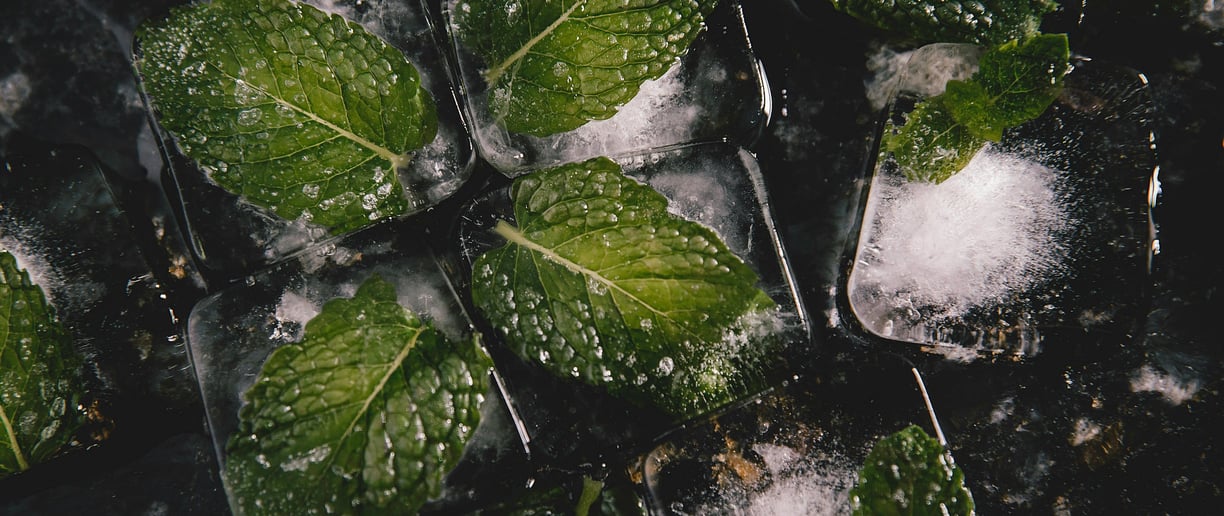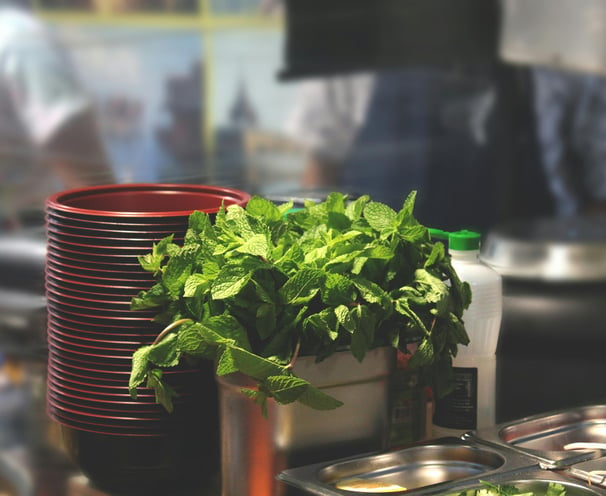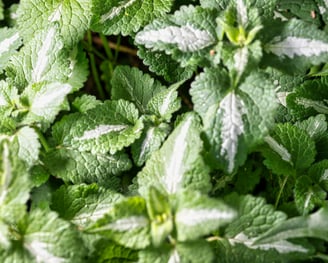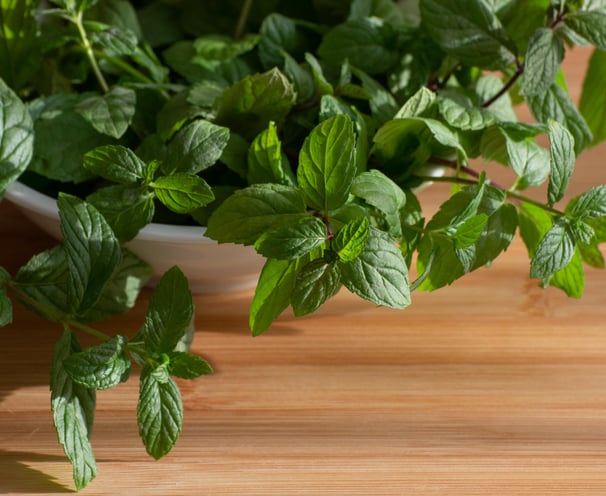

Mint, the aromatic herb prized for its refreshing flavor and invigorating scent, hails from various regions worldwide, including the Mediterranean. This versatile plant features square stems and serrated leaves, with tiny flowers blooming in clusters. Mint holds a cherished place in culinary traditions, where its fresh, minty taste adds depth to a myriad of dishes, from savory to sweet. Beyond its culinary uses, mint is valued for its medicinal properties, known for its digestive aid and breath-freshening qualities. Its cooling properties make it a popular choice for herbal teas and infusions, providing relief on hot summer days. Mint's fragrance is also utilized in cosmetics, soaps, and aromatherapy products, contributing to a sense of rejuvenation and vitality. Whether enjoyed in a refreshing drink, as a culinary herb, or in aromatic oils, mint captivates with its versatility and revitalizing presence, enriching both body and soul.
Mint


Mint thrives in well-drained soil with a slightly acidic to neutral pH level, ideally between 6.0 and 7.0. It prefers loamy or sandy soil that is rich in organic matter and provides good drainage. Amending heavy clay or compacted soil with organic matter such as compost or aged manure helps improve soil structure and fertility, ensuring optimal growing conditions for mint plants. Additionally, incorporating per-lite or coarse sand can further enhance drainage. Mint plants are sensitive to waterlogged conditions, so it's essential to avoid over-watering and ensure that the soil dries out between watering sessions. Planting mint in a location with partial to full sunlight exposure promotes healthy growth and vigorous foliage development. Conducting a soil test before planting can help assess nutrient levels and pH, allowing for adjustments as needed to create an ideal growing environment for mint.
Soil Needs


Mint has moderate water needs, requiring regular watering to maintain soil moisture levels, especially during periods of active growth. Water mint plants deeply but infrequently, allowing the soil to dry out slightly between watering sessions to prevent waterlogged conditions that can lead to root rot. It's important to water the soil directly at the base of the plant to avoid wetting the foliage, as this can increase the risk of fungal diseases. During hot, dry periods, increase watering frequency to keep the soil consistently moist, but be cautious not to over-water. Mulching around the base of mint plants helps retain soil moisture and suppress weeds. Regularly monitor soil moisture levels and adjust watering practices accordingly to ensure optimal growth and health of your mint plants.
Water Needs


Mint generally has moderate fertilizer needs, benefiting from occasional feeding to support healthy growth and flavor development. It's best to apply fertilizer sparingly to avoid excessive foliage growth at the expense of flavor. A balanced, slow-release fertilizer can be incorporated into the soil before planting to provide essential nutrients. Alternatively, a light application of a low-nitrogen, high-phosphorus fertilizer in early spring can promote healthy root development and flavorful foliage. Avoid fertilizers high in nitrogen, as they can stimulate excessive leaf growth. Organic options like compost or aged manure can also be beneficial, providing nutrients while improving soil structure and fertility. Apply organic amendments as a thin layer around the base of the plant in spring. Overall, it's important to prioritize well-drained soil and proper watering practices to ensure the best growth and flavor from your mint plants.
Fertilizer Needs


Mint offers a diverse range of varieties, each with its own unique characteristics and flavors, making it a versatile herb for culinary and medicinal use. Some popular mint varieties include:
Spearmint (Mentha spicata): Known for its bright green leaves and refreshing, slightly sweet flavor, used in teas, cocktails, and culinary dishes.
Peppermint (Mentha x piperita): Recognized for its strong, cooling flavor, widely used in candies, desserts, and herbal remedies.
Chocolate Mint (Mentha x piperita 'Chocolate'): Features dark green leaves with a hint of chocolate flavor, perfect for desserts, beverages, and cocktails.
Pineapple Mint (Mentha suaveolens 'Variegata'): Variegated foliage with subtle pineapple undertones, ideal for salads, fruit dishes, and beverages.
Apple Mint (Mentha suaveolens): Fruity aroma and mild flavor, versatile for both sweet and savory dishes.
Orange Mint (Mentha x piperita 'Citrata'): Offers a citrusy aroma and flavor reminiscent of oranges, refreshing in drinks, salads, and desserts.
These are just a few examples of the diverse mint varieties available, each offering its own distinct flavor profile and culinary possibilities for home gardeners and culinary enthusiasts alike.
Mint Varieties


